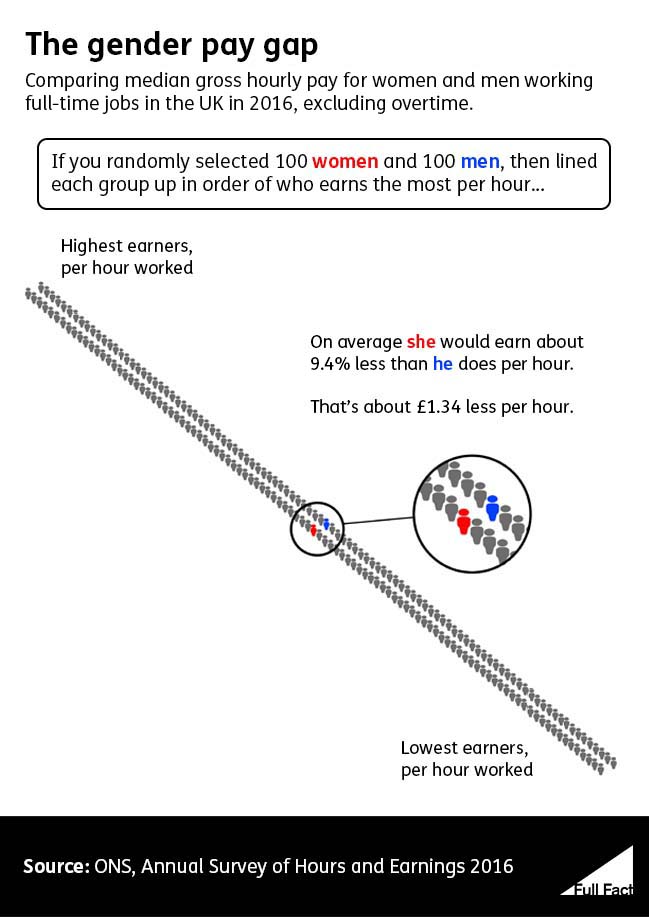What was claimed
The gender pay gap is at the lowest on record.
Our verdict
That’s correct across a range of measures, although there’s still a significant gap overall.
The gender pay gap is at the lowest on record.
That’s correct across a range of measures, although there’s still a significant gap overall.
We have the highest female employment rate on record.
Correct. A higher proportion of women aged 16-64 are in paid work than ever before, although the employment rate is still lower for women than for men.
More FTSE 100 board directors are women than ever before.
Correct. The proportion seems to have fallen fractionally in the months leading up to March 2017, although that’s nothing compared to the large year-on-year increases that came previously. Slightly over a quarter of FTSE 100 board members are women, so we’re still some way off equal representation on company boards.
“We have the highest female employment rate on record, we have the highest percentage of women on FTSE 100 boards on record, the gender pay gap is at the lowest on record... there’s still much more to do...”
Amanda Milling MP, 8 March 2017
It’s true that we have the highest female employment rate on record. A higher proportion of women aged 16-64 are in paid work than ever before and the same is true if you count everyone up to state pension age.
There’s still a nine percentage point gap between the employment rate for men and women aged 16-64.
We also have very near to the highest ever percentage of women on FTSE 100 boards, according to the professional forum Boards Watch.
The FTSE 100 includes the hundred most highly-valued companies listed on the London Stock Exchange.
About 27% of directors on their boards are women: 32% of non-executive directors and 10% of executive directors. The proportion seems to have fallen fractionally in the months leading up to March 2017, although that’s nothing compared to the large year-on-year increases that came previously.
Finally, it’s true that the gender pay gap is the lowest on record by median hourly earnings. That’s correct whether you compare hourly earnings across all workers, or just look at full time workers.
There’s still a gap. If you knew nothing about two people except that one was a man, one was a woman, and both were working full-time, then you’d expect the woman to earn about £1.34 per hour less than the man.
Your expectations would change if you knew a bit more about them. The gender pay gap varies according to things like age, how much you get paid, the hours you work and the type of job you do.
We’ve discussed what these kinds of statistics do and don’t tell us in our article on age, motherhood and the gender pay gap.

Full Fact fights for good, reliable information in the media, online, and in politics.
Bad information ruins lives. It promotes hate, damages people’s health, and hurts democracy. You deserve better.